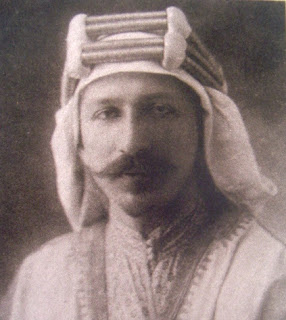Chasing Little Syria's A.J. Macksoud...

Chasing Little Syria's A.J. Macksoud and his Phonograph Record Company A.J. Macksoud Phonograph Company Trade Mark. You’ve seen his most common label before – a male lion rests on the ground, head up, looking off into the distance. A magnificently brilliant, rising sun with one eye visible, peeks from behind this king of beasts. The symbol of the lion and the sun are as old as ancient Egypt itself, but in this case the adapted iconography represents the Christian Saint Mark, the evangelist and apostle, believed to have established the Orthodox Coptic Church at Alexandria. Color variations of the label include: a black, pink, gold, white combination; a red, white, gold, pink; a pink, grey, white, and a red and gold. Some label variations include the same lion and sun (much smaller in size) set inside a symmetric, mosaic archway supported by four pillars (two) on each side. Most are printed with the address 77 Washington Street, New York, but a much rarer variant



